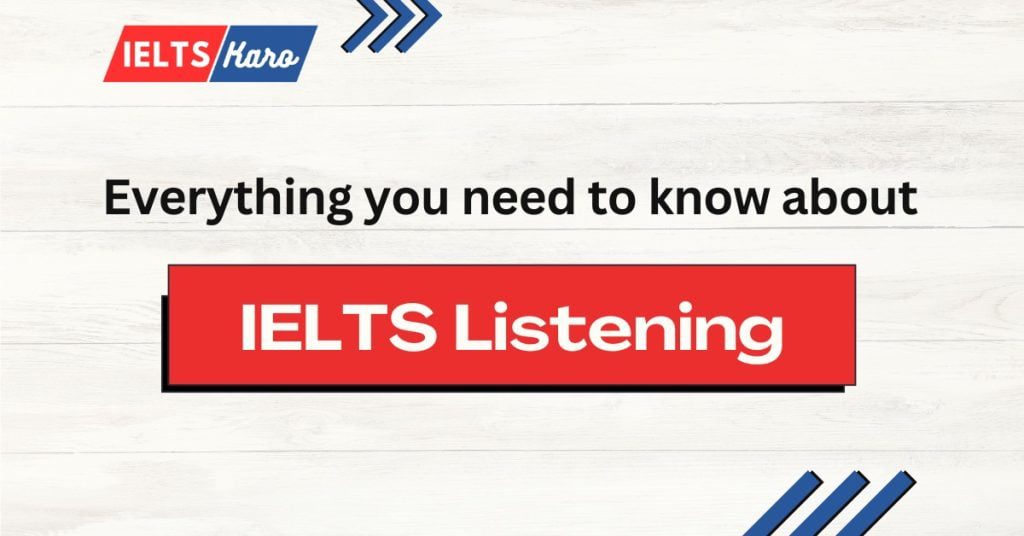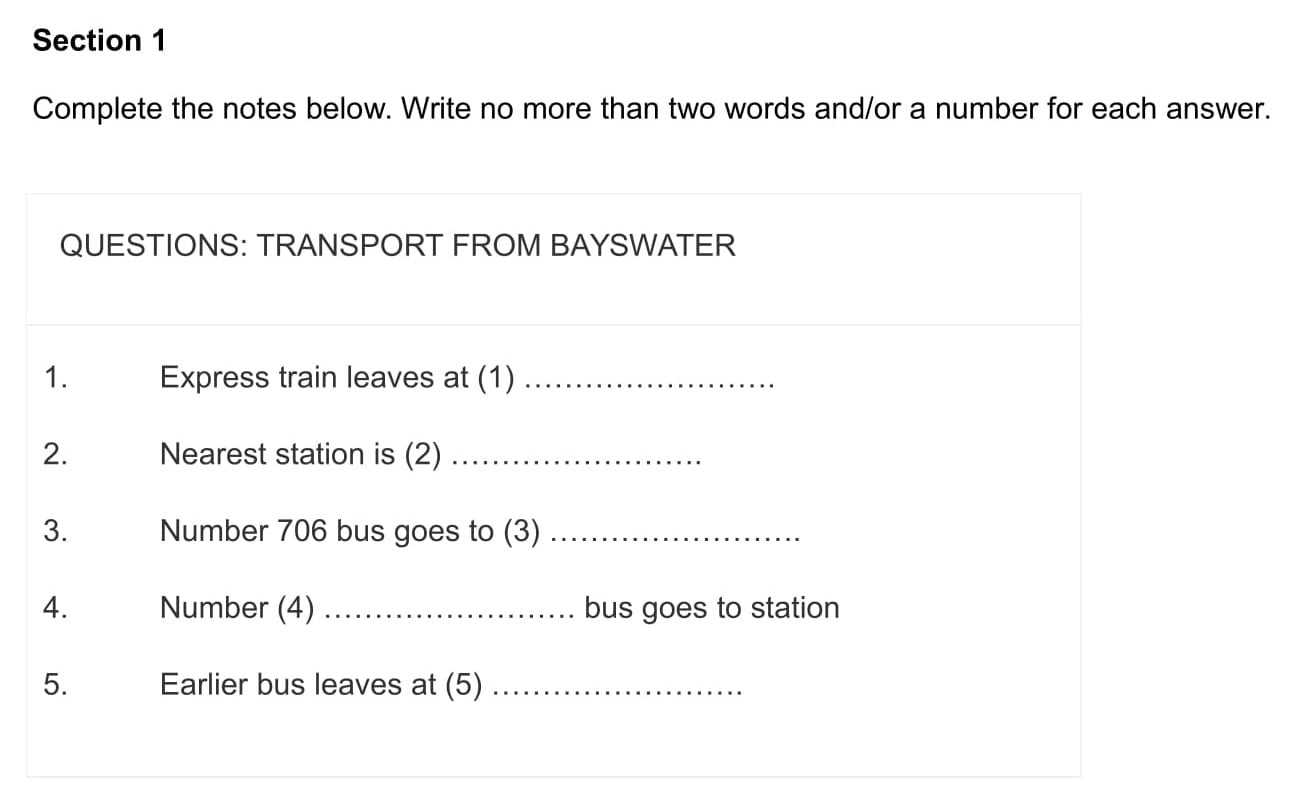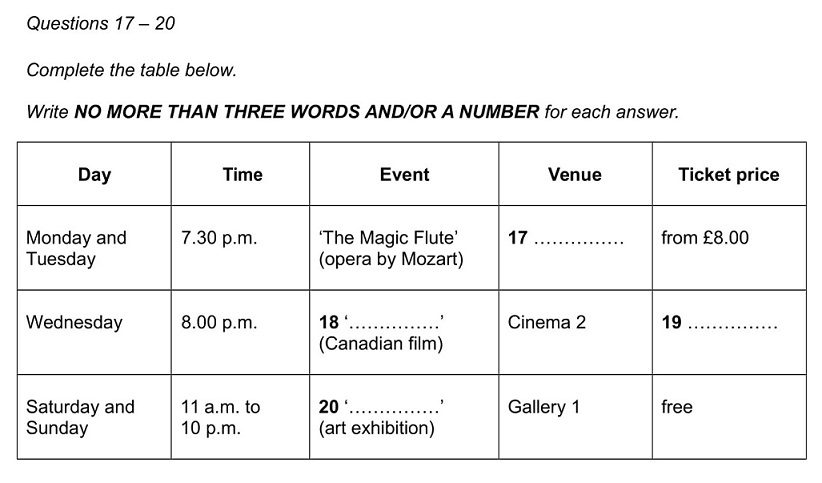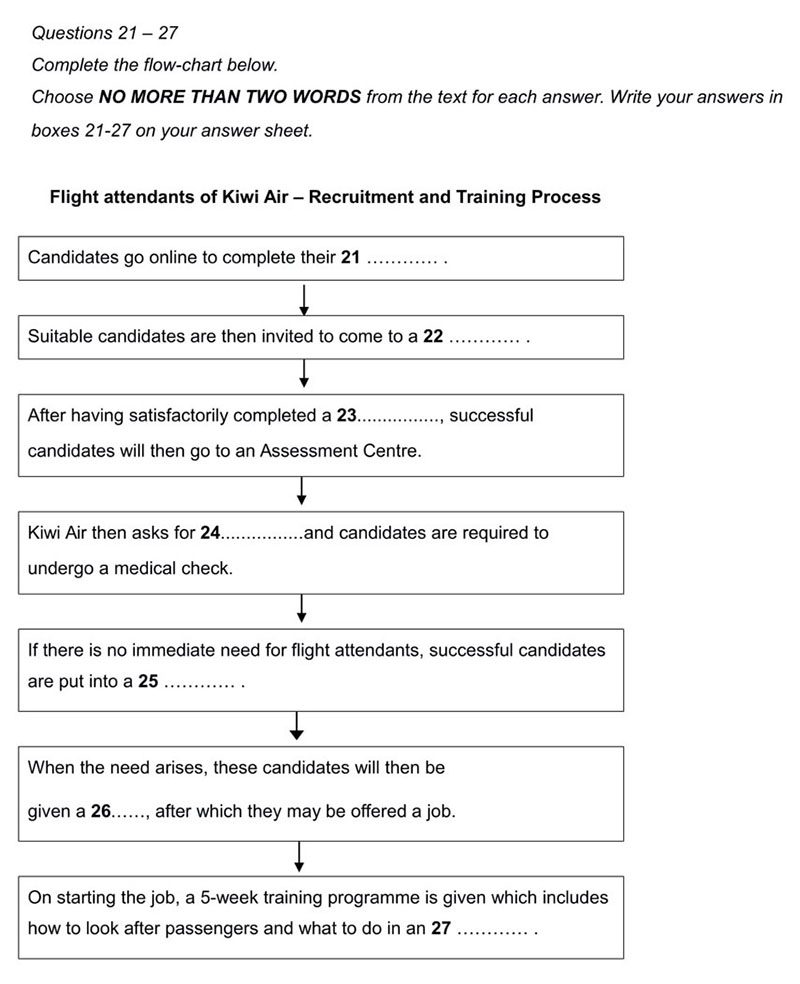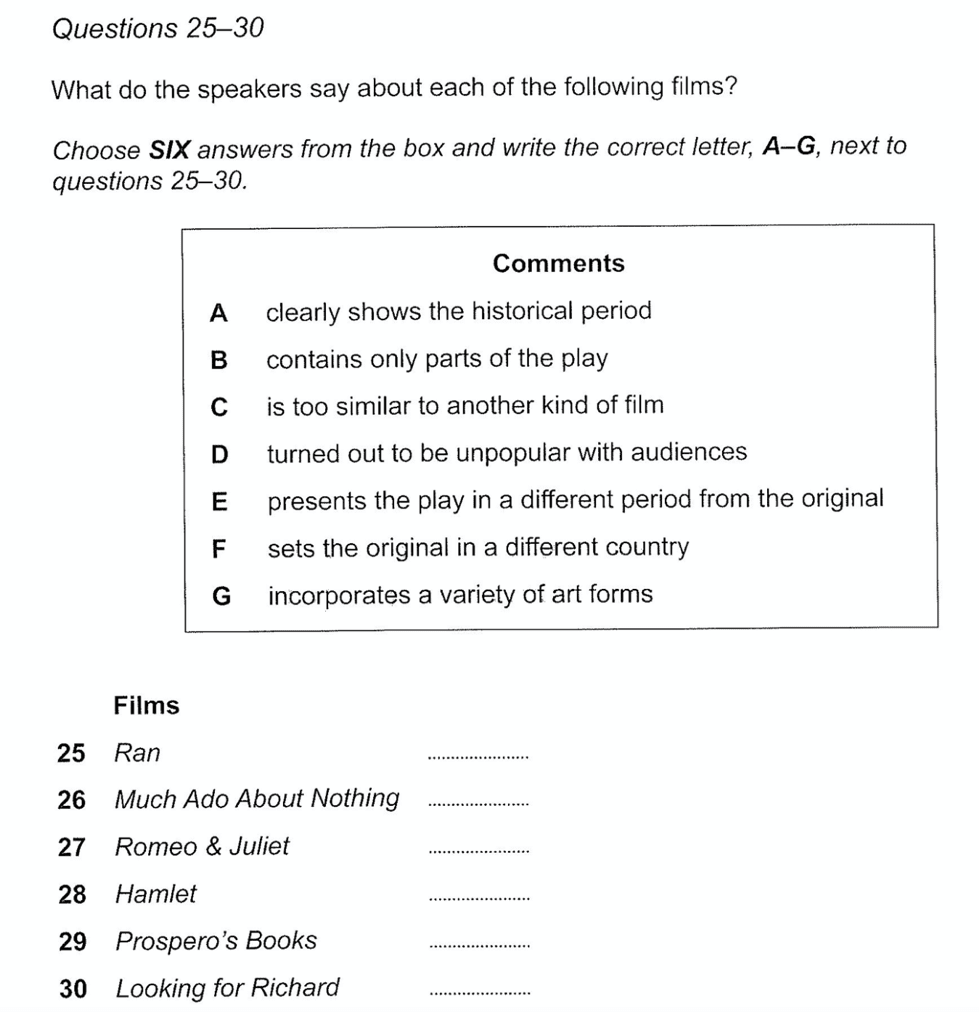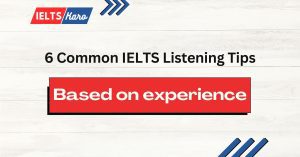PS: The following information is from someone who got an 8.5 in IELTS Listening Test, (Yup, that’s me, back in November 2020). Hence, I can share tips based on my experience and knowledge 🙂
IELTS Listening is a 30-minute module that is also the first test of the IELTS exam. You will get 40 questions to solve within half an hour. However, beware though, the recording that you hear will not be played again and there will be no option for you to stop the recording. You have to answer the questions as you listen to the recording.
The IELTS Listening test is designed to assess you on multiple factors when it comes to your listening skills, such as:
- Understand the main idea of the passage and the factual information.
- Understand the situation and recognize the response from different speakers.
- Ability to write down the correct names and words.
IELTS Listening Test Complete Information – All You Need To Know
- The listening test is the same, with no differences in marking criteria for Academic and General Training candidates.
- The IELTS on Paper allows you 10 extra minutes to transfer your answers to the answer sheet, thereby leading to a total of 40 minutes of test duration.
- The IELTS on Computer does NOT offer you extra 10 minutes as you will be solving all the questions, and selecting the appropriate answers on the computer as you listen to the recording.
- There are 4 parts to the IELTS Listening test. These are:
- The first part – In a social context, a conversation by two people, mostly a phone call, asking for reservation, hotel booking, ticket booking, or joining a club, etc.
- The second part – A conversation or speech by just one person in a social context.
- The third part – A conversation between 2, up to 4 people in an academic or educational context.
- The fourth part – A talk by one person on a topic, usually a tour guide, or in an academic context.
- Pay close attention to the instructions. Some questions require you to answer with just ONE WORD, others require ONE WORD AND/OR A NUMBER, or NO MORE THAN TWO WORDS, or NO MORE THAN THREE WORDS.
- There will be time for you to read the questions before the recording plays for each part. This time is usually in between 15 seconds, up to half a minute. During this time, you need to swiftly skim and scan all the questions and get a good visual understanding of what the examiner is asking.
- Wrong spelling of the word will count as the wrong answer. Many times, a difficult word will be spelled out for you, specifically in the 1st part. Pay heed to the pronunciation so that you know how to write the correct answer.
IELTS Listening Question Types
The question types in IELTS listening are more or less the same as in reading. These are:
-
Multiple Choice
Multiple choice questions can be answered with one correct answer, or more than one correct answer. Read the question very carefully to check how many answers are required.
In a multiple choice question, where you are required to choose one correct answer (A, B or C), you will be given:
- a question followed by three possible answers
- the beginning of a sentence followed by three possible ways to complete the sentence.
In a multiple choice question, where you are required to choose more than one correct answer you will be given a longer list of possible answers and told that you have to choose more than one answer.
Multiple choice questions are used to test a wide range of skills. You may be required to have a detailed understanding of specific points or an overall understanding of the main points of the listening text.
-
Table, Form, Note, Flow-chart completion (Fill in the blanks)
In this part of the test, you will get a table, form, note or a flow-chart. Then, as you hear the recording, you are to answer the questions in the same order as appeared as the questions appear. Here are more details about each one of the question types:
A form:
It contains factual details such as names, addresses, telephone numbers. This is going to be mostly in the first part of the test. Here is an example:
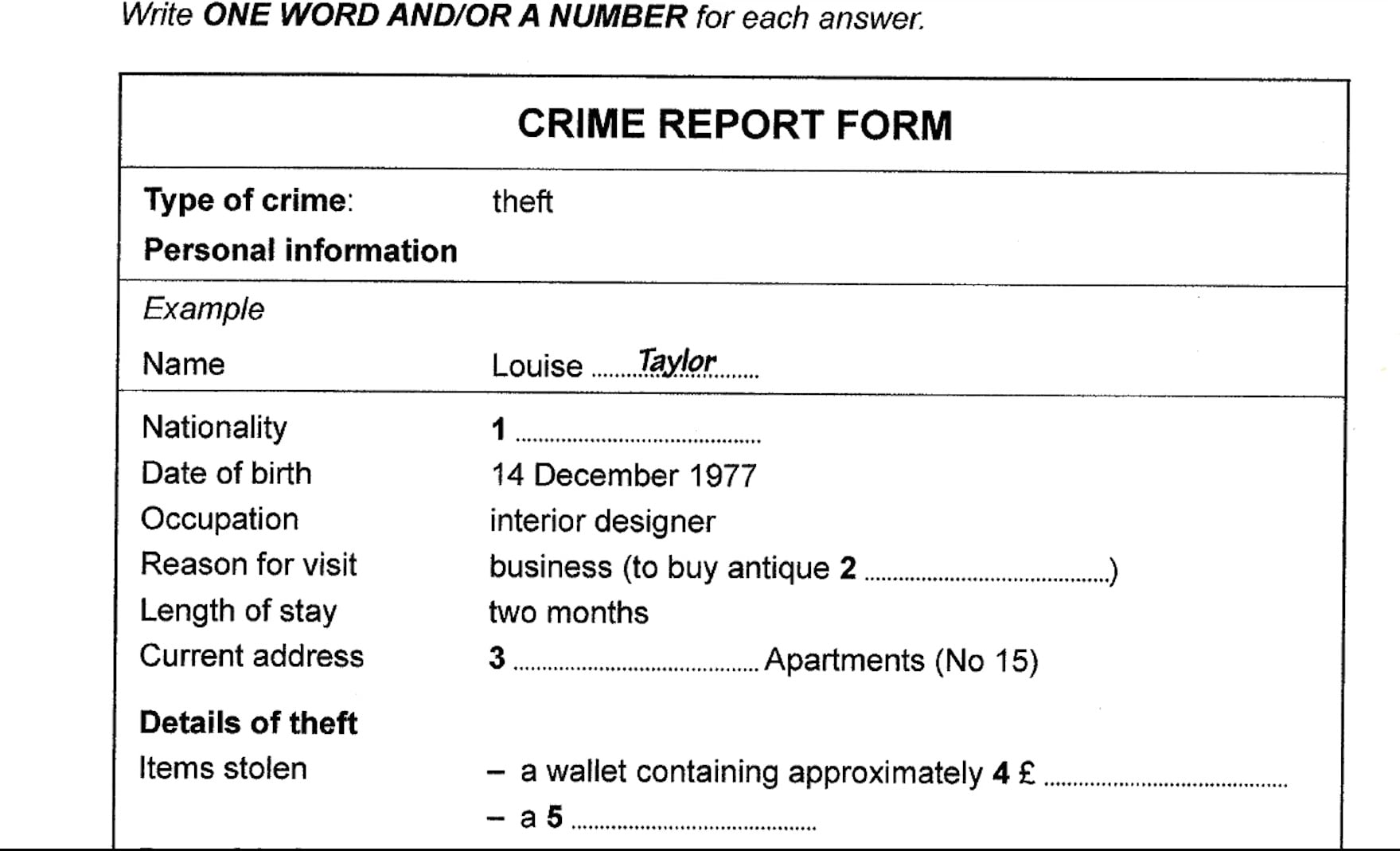
Notes:
Similar to the Summary Completion in IELTS Reading, the Listening Test has notes that you need to fill in with the right answers as you listen to the recording.
A table:
Data in rows and columns that needs to be filled out.
A flow-chart:
A flow-chart shows a set of process or plan with a clear direction using arrow. This way, you will understand the order of the questions and how to answer them. The right answer will either be from a list in the question paper, or from the recording itself. Here is an example of a flow-chart:
A LOT of students make a small mistakes of not paying attention to the instructions. You need to be sure what the instructions are saying. For instance “One word answer”, “No more than two words”, OR “One word And/Or a Number.”
If you write more than the allocated word count limit, your answer will be marked as wrong. Another example is “No More Than Two Words.” This means that your answer can be one word, or in two words. It does not mean that the answer has to be two words throughout, or one word. Pay attention to the situation and the recording, so that you can write the answer. .
-
Map completion
We conducted a survey before launching this website. Most of my students had problems with IELTS Listening Maps. Specifically, they were unclear on what type of vocabulary to use.
A map is a plan of a building, or a city, and you have to label parts A, B, C and more based on the answers required. You need to listen to the recording, and match the correct answer from the list of answers on the paper.
The map assesses how well you are able to understand the vocabulary for maps and interpret the directions to reach at your desired place.
-
Matching Question
As the name implies, you need to match the right answer from the list of options, based on what you hear in the recording. The matching question. Here is an example:
Here’s a trap though; you may never hear the EXACT sentences as you see in the description as shown above. For example, the speaker in the recording may say something like the following to match with “clearly shows the historical period.”
It obviously reflects ancient time.
If you pay close attention, this is a paraphrased version of what the speaker stated. You need to carefully match the associated answer with that description. Hence, basic knowledge of vocabulary and synonyms is compulsory in acing your IELTS Listening Exams.
Before the start and end of every part, you will get up to 30 seconds of time to check your answers. During that time, you are to read the questions for the next part, except Part 4, obviously. This will ensure that you stay one step ahead of the recording.
FAQs:
What should I do on the exam day to ensure success?
On exam day, ensure you arrive early, bring all necessary documents, stay calm, and listen carefully to instructions. Practice deep breathing to manage any anxiety and focus on the task at hand.
Are there any differences between the paper-based and computer-based IELTS Listening Test?
The primary difference is that the paper-based test provides an additional 10 minutes to transfer answers to the answer sheet, whereas the computer-based test does not. However, the test format and content remain the same.
How should I use the time before each recording starts?
Use the time before each recording to read through the questions quickly. This helps you understand what to listen for and identify keywords and phrases that will signal the answers during the recording.
What are common mistakes to avoid in the IELTS Listening Test?
Common mistakes include not following the word limit in answers, misspelling words, not understanding the instructions properly, and not using the provided time to review and check answers.
How are the listening recordings structured?
Each section of the listening test has a distinct context and structure. Section 1 features a social dialogue, Section 2 a social monologue, Section 3 an educational discussion, and Section 4 an academic lecture. The recordings are played only once, so it’s essential to listen carefully.
What should I do if I miss an answer during the listening test?
If you miss an answer, stay calm and move on to the next question. Trying to go back may cause you to miss more information. Use the time at the end of each section to review your answers and make educated guesses if necessary.
Can I write my answers in capital letters?
Yes, you can write your answers in capital letters. This can help avoid confusion over unclear handwriting and ensure clarity in your responses.
Is spelling important in the IELTS Listening Test?
Yes, spelling is crucial. Incorrect spelling will result in a wrong answer, even if the response is otherwise correct. Pay close attention to the spelling of words mentioned in the recording, especially names and technical terms.
What types of questions are on the IELTS Listening Test?
The test includes multiple-choice questions, fill-in-the-blank tasks (tables, forms, notes, flow-charts), map completion tasks, and matching questions. Each type requires specific strategies to answer correctly.
How can I improve my listening skills for the IELTS test?
Improving listening skills involves regular practice with IELTS listening materials, focusing on different accents, and developing effective note-taking strategies. It is also helpful to listen to English podcasts, watch English-language TV shows, and practice with IELTS sample tests.

